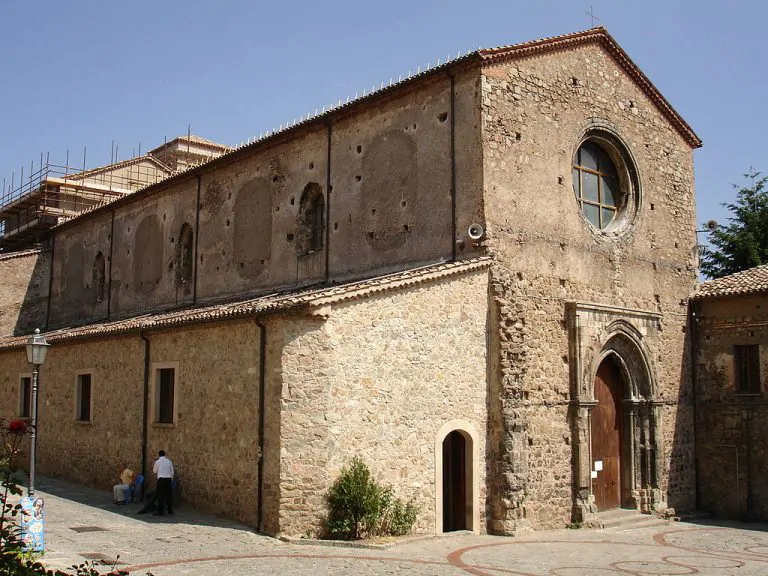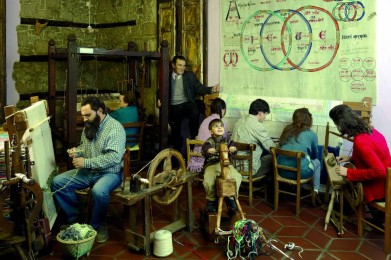The Florense Abbey of San Giovanni in Fiore, one of the most impressive and symbolic religious buildings in Calabria, is deeply linked to the visionary figure of Abbot Joachim da Fiore (1130-1202), a mystic, theologian and reformer of monastic thought. Founded in 1215 in the locality of “Fiore Nuovo” after the destruction of the first settlement (Jure Vetere) by fire, the abbey today represents the historical and spiritual heart of the municipality of San Giovanni in Fiore, in the Sila National Park.
Origins and foundation
Joachim, who retired to Sila in 1191 after leaving the Cistercian order, founded a new monastic order, the Florensi, officially approved by Pope Celestine III in 1196. The first coenoby, destroyed in 1214, was replaced by the new abbey, built by his followers a little further downstream on a ridge overlooking the Neto River valley. The building was completed by Fra’ Giuliano, “Magister Artium,” and possibly supervised by Luca Campano, the abbot’s disciple and architect of Cosenza Cathedral.
Architecture and symbolism
The abbey has a slender, tall, unadorned nave in the Cistercian Romanesque style, with a single-nave plan culminating in a rectilinear apse. The atmosphere of the interior is austere, collected, totally aniconic, designed to encourage spiritual recollection.
The apse wall is the centerpiece of the entire structure: a large fretwork with seven circular openings-four circles, three small and one large-that, according to Joachim’s theological vision, symbolize the unity of the Trinity. This pattern, built on a modular grid with a base of three, gives rise to an explosion of natural light that floods the apse, emphasizing the sense of spirituality and mystery.
The gabled and undecorated exterior façade retains a finely carved limestone portal. Next to the main nave, a side aisle houses the permanent exhibition of the Liber Figurarum, a prophetic and symbolic work attributed to Joachim himself.
Altar and remains of Joachim
The liturgical heart of the abbey is the majestic gilded-wood Baroque altar, made in 1740 by cabinetmaker Giovanbattista Altomare of Rogliano, which today, though beautiful, partially interrupts the view of the pierced apse. The right chapel, above the crypt, holds the urn with the remains of Joachim of Fiore, moved here in 1226.
Spirituality and itineraries
The Florense Abbey is also the destination of the Joachimite Way, a spiritual and naturalistic itinerary that retraces the places symbolic of the abbot’s life and thought, immersed in the landscapes of Sila.
A living monument of faith and thought
The Abbey is not only an architectural masterpiece, but also the physical manifesto of the theological thought of Joachim, a secular prophet and reformer. Every stone, proportion, symbol and luminous opening is imbued with meaning, representing a different church founded on spirituality, light and silence.
Today the abbey continues to live on as a place of culture, memory and faith, in the majestic and unspoiled landscape of Sila, a silent witness to a thought that has spanned the centuries and left an indelible mark on the history of Christianity.



